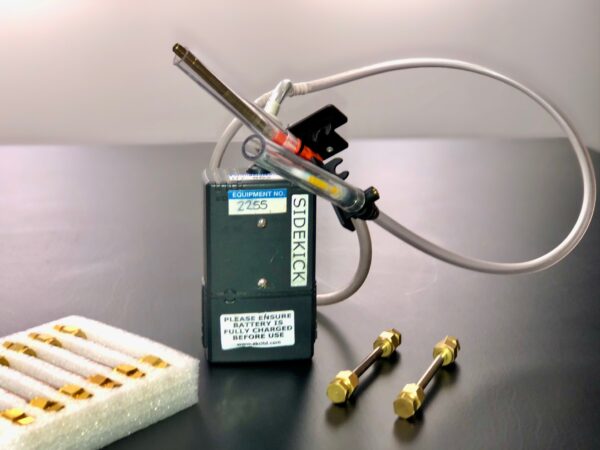The internal environment of new or refurbished buildings can pose a health risk to occupants via the emission of harmful pollutants from materials utilised as part of the construction, fit out and finishing works, such as paints and furnishings that’s why we need Indoor Air Quality Testing.
Many people are not affected by short-term exposure to the low levels of VOCs found in buildings; however, some people can be more sensitive, such as people with asthma or allergies. Research is ongoing to better understand any health effects from long-term exposure to low levels of VOCs.

How indoor air quality testing can help to reduce exposure to VOCs
In most cases, you can best avoid exposure to VOCs by controlling their source. This can be undertaken by the use materials and products that do not give off VOCs. And adequate indoor air quality testing throughout the duration of the works.
Such examples are listed below.
- Ensure you have a suitably trained operative with calibrated air quality testing equipment to check that the air quality levels are safe via ongoing indoor air quality sampling.
- To reduce VOCs, select paints and varnishes that are labelled as containing low VOCs
- Do not allow smoking in or near your office. Second-hand smoke contains many pollutants, including VOCs
- Minimise the use of scented products such as aerosol deodorizers and candles/incense
- Where possible store furnishings and building materials for at least a few weeks. This will allow gases to be given off before you bring them into your office. If this is not possible, increase the ventilation by opening windows and doors in the building wherever possible.
- Ensure contractors store paints, cleaners and solvents in a separate room like an outdoor shed or in areas with proper ventilation and ensure lids are kept on unless in use.
- Ensure contractors remove all old or unnecessary tins or bottles that contain products with VOCs from the workplace. Do not throw unused products away ensure they are safely and properly disposed.

New carpets/carpet tiles can effect Indoor Air Quality
- If glues are required to bond the carpet to the floor, only select those suitable for indoor use
- Ensure operatives leave the area throughout the duration of the carpet installation.
- During the installation, try to ventilate the area as much as possible using fans and opening doors and windows. Continue to ventilate for several days after installation until the smells have gone.
- Double check the air quality by undertaking ongoing indoor air quality testing.
Adequate Ventilation:
- Ensure you get enough fresh, clean air into your building by opening windows and doors.
- Increase ventilation prior to bringing new VOC sources into your building such as new carpets, furniture, or drapes. Open doors, windows and skylights wherever possible.
- Follow manufacturers COSHH labels. If the label says “use in a well-ventilated area” go outside or to an area where an exhaust fan or open window provides extra ventilation throughout. In all instances ensure adequate ventilation is provided throughout the works and rest period.
We are the Indoor Air Quality Testing Experts
APT Sound Testing has a large amount of experience in the provision of BREEAM Indoor Air Quality Testing services. This ensures we are able to address all elements of indoor air quality testing. We have supported a wide range of BREEAM projects within the commercial and industrial sectors. These have included hospitals, health centres, laboratories.
Please get in touch with a member of our engineering team today at info@aptsoundtesting.co.uk or 01525 303905 to find out more about how we can help with the indoor air quality testing aspect of your BREEAM development or visit our case studies to review recently completed projects such as The Annexe (Imperial War Museum) and The Heals Building in Central London.
